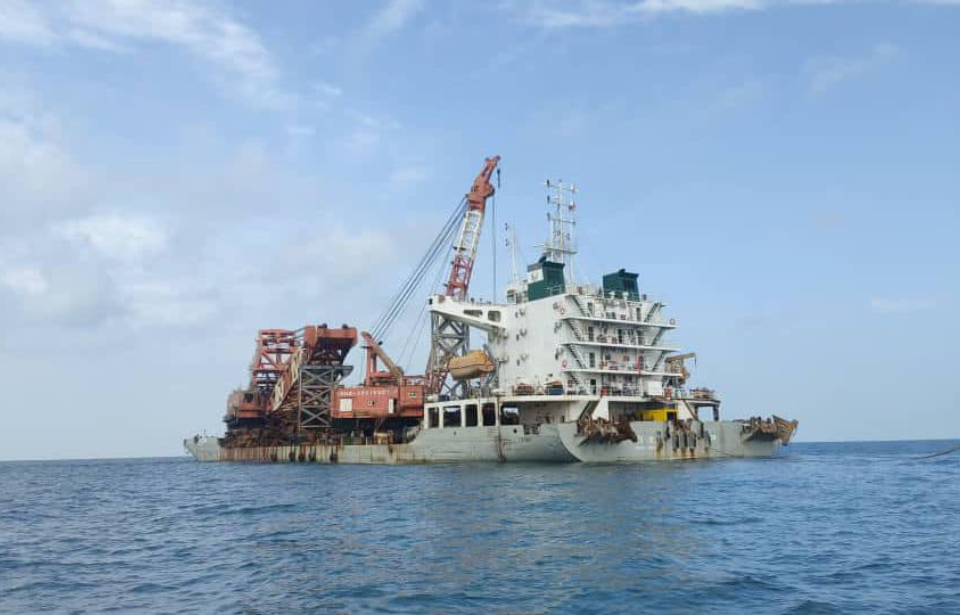The Malaysian Maritime Agency has detained a Chinese barge it accuses of looting two British shipwrecks in the South China Sea. The accusations come after World War II-era shells and scrap metal were found aboard the vessel during a routine check after it was found to have anchored off southern Johor without a permit.
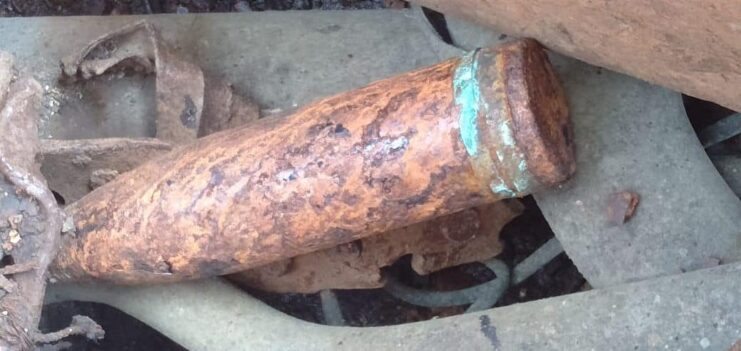
The barge, registered in Fuzhou, China as Chaun Hong 68, was detained with 32 crewmen onboard. Malaysia’s Maritime Agency believes the WWII-era artillery and pre-war steel are linked to a previous police seizure, which saw dozens of similar pieces taken from a private junkyard in Johor. According to the New Straits Times, those relics are thought to also be from wartime wrecks.
Just a month prior to the barge being detained, divers and fishermen reported seeing an unknown vessel in the area where the two shipwrecks – the HMS Prince of Wales (53) and Repulse (1916) – are located, some 60 miles off the coast of Malaysia. The location is part of the country’s extended economic zone.
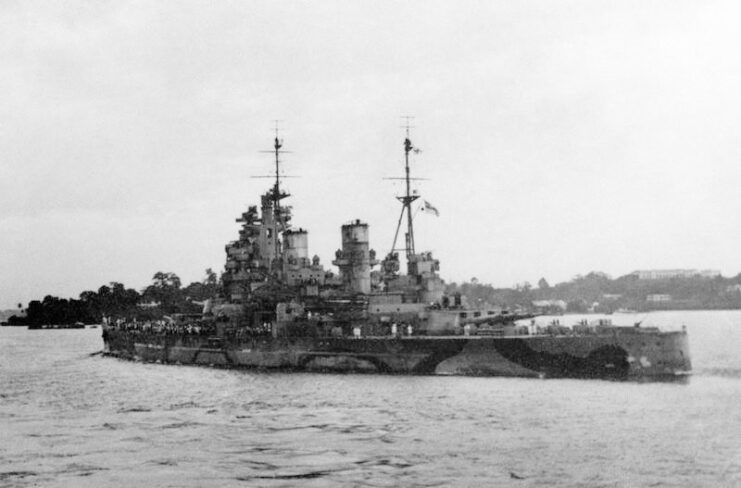
The HMS Prince of Wales was one of the British Royal Navy’s most important battleships. During the Second World War, she played a critical role in the Battle of the Denmark Strait, scoring three hits on the infamous German battleship Bismarck.
The HMS Repulse‘s history dates back to the First World War, when the battlecruiser, once one of the fastest capital ships in the world, participated in the Second Battle of Heligoland Bight. She joined the Spanish Civil War during the interwar period, and throughout her short-lived WWII service spent the majority of her time hunting German vessels.
After participating in the Norwegian Campaign, Repulse and Prince of Wales were assigned to Force Z and sent to the Pacific to protect British assets – without aircraft support. On December 10, 1941, they came under fire from Japanese-flown Mitsubishi G4Ms. While there were several near misses, one of the torpedoes struck the battlecruiser, while three hit Prince of Wales, with them both sinking.
The 842 sailors aboard the vessels perished in the attack, leading the shipwrecks to be designated as war graves.
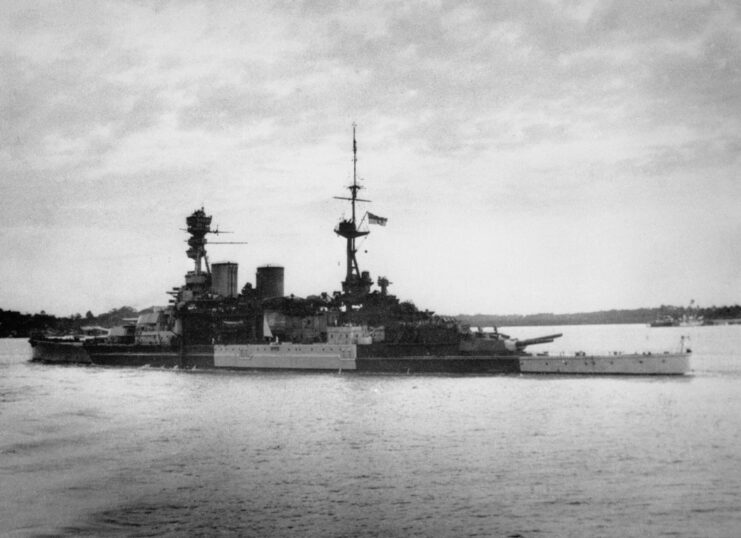
Speaking with The Washington Post, experts with Britain’s Maritime Archaeology Sea Trust (MAST) say the value of the raw material taken from the HMS Prince of Wales is estimated to be at least $4 million, with the total likely higher when relics made from bronze or copper are taken into consideration.
Senior archaeologist Giles Richardson adds that the Chinese barge involved in the looting likely used spoofing to hide itself from officials, with MAST believing the the illicit activities could have been going on for as long as five months. Satellite and maritime vessel tracking indicates that Prince of Wales had been undergoing a “sustained campaign of destruction” since December, with the Chinese vessel returning to the area six different times.
The pre-war steel used to construct vessels during the interwar period and prior is incredibly valuable, and it can be melted down for use in medical and scientific equipment.
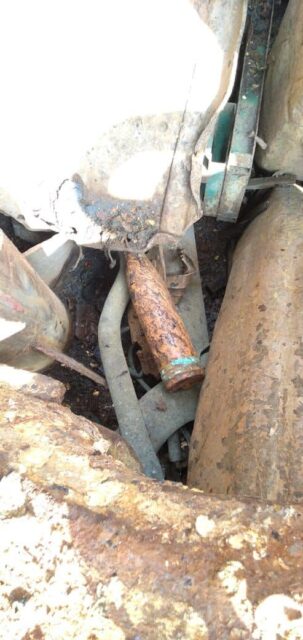
The Chinese Foreign Ministry has revealed that it’s been in touch with Malaysian authorities to urge them to “earnestly protect the security and lawful rights and interests of Chinese citizens and report the progress of the investigation in a timely manner.”
Officials in the United Kingdom have also chimed in on the alleged looting by the Chinese barge, with the BBC reporting the Ministry of Defence as saying, “We strongly condemn any desecration of any maritime military grave. Where we have evidence of desecration of the wrecks of Royal Navy vessels, we will take appropriate action, including working with regional governments and partners to prevent inappropriate activity at such sites.”
Dominic Tweddle, the director general of the National Museum of the Royal Navy, said in a statement that the institution is “distressed and concerned at the apparent vandalism for personal profit,” adding, “What we need is a management strategy for the underwater naval heritage, so that we can better protect or commemorate these ships. That may include targeted retrieval of objects.”
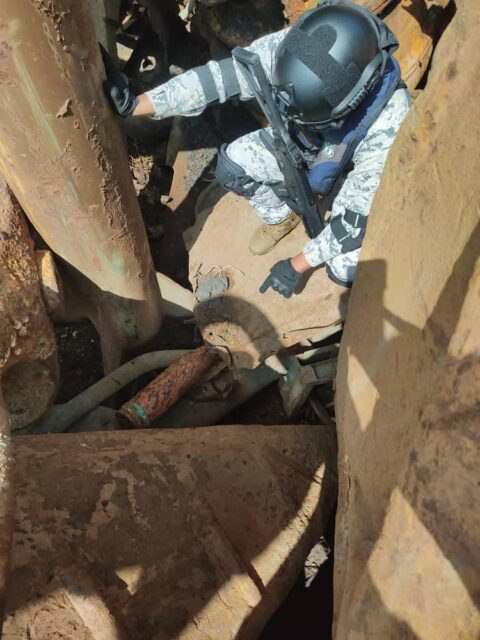
More from us: Russian Missile Struck Near NATO Training Facility in Poland, Found Months Later
Malaysia’s Maritime Agency plans to officially identity the cannon shells found aboard the Chinese barge with the assistance of the National Heritage Department and the Royal Malaysian Police. In a post on Facebook, it said the case will be investigated under Section 491(b)(L) of the 1952 Merchant Shipping Ordinance.
